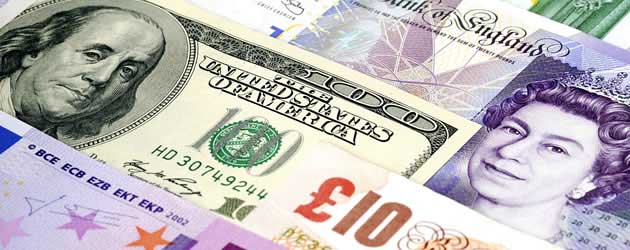
Sterling has weakened over the last few days against the US Dollar, falling from a 27-month high of 1.6466 to settle close to the psychologically significant 1.6300 mark, due to growing speculation that the Federal Reserve could be on the verge of reducing the pace of its asset purchasing programme later this week.
Later this morning, the Office for National Statistics (ONS) will announce the pace at which UK Consumer Prices increased during November. Analysts anticipate a monthly rise of 0.2%, which is likely to see the headline annualised figure remain at 2.2%. If the data prints inline with expectations then traders are probably going to interpret it as a neutral release.
The CPI inflation rate fell steeply from 2.7% to 2.2% in October, and this was seen to have negative implications for the Pound because the Bank of England has stipulated that it will raise interest rates if the Consumer Price Index is forecast to be above 2.5% in 18 months time. Subsequently, a lower rate of CPI is now considered bearish for Sterling because it allows the BoE to keep rates low for longer.
For this reason, a stronger-than-anticipated inflation report this morning could send GBP/USD back above technical resistance at 1.6330. However, a deviation to the downside could drive Sterling down below support at 1.6260.
Later on in the day, the Bureau of Labour Statistics (BLS) will release its findings with regards to US price pressures. The report is predicted to show that CPI inflation rose from 1.0% to 1.3% during November. This is likely to have a positive impact on US Dollar trading because soft Consumer Prices have been cited as potential obstacles to monetary tightening by Fed officials.
US CPI plunged from 2.0% to 1.0% between August and October and this raised the prospect of deflation, which can be very damaging to economic growth because it encourages consumers to delay purchases in order to wait for cheaper prices in the future. However, if inflation is seen to be heading back higher it will ease some pressure on the Federal Reserve, and this is likely to bolster demand for the ‘Greenback’.
Yesterday afternoon the US Dollar rallied mildly against the Pound due to a surprise 1.1% jump in Industrial Production. With Non-farm Payroll labour market data and GDP figures coming in relatively optimistically in recent weeks, traders now see a 50% chance that the US Central Bank will announce a tapering of its $85 billion a month quantitative easing scheme during Wednesday’s meeting.
If the Fed does opt to reduce QE3 then, dependent on the amount of purchases that are cancelled, the US Dollar is liable to rally against the Pound. It is difficult to judge how much of an instant impact the taper could have on the cable pairing, but it is entirely possible that GBP/USD could slide through resistance levels down towards, and possibly below, 1.6200.

Comments are closed.